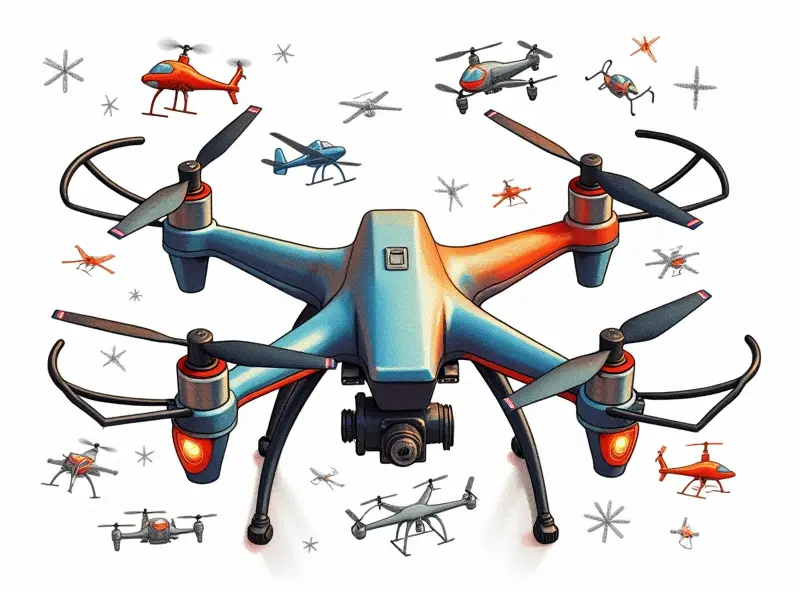What is aileron in RC airplanes?

Understanding Ailerons in RC Planes
Ailerons are crucial components for controlling the roll and lateral movement of remote control (RC) airplanes. This article delves into the intricacies of aileron controls, providing valuable insights for both beginners and experienced pilots.
Understanding Ailerons in RC Planes
Ailerons are small hinged surfaces located on the trailing edge of an airplane's wings near the wingtips. They work in opposition to each other: when one aileron moves up, the opposite aileron moves down. This differential movement causes the plane to roll left or right, allowing for precise maneuvering and control.
Aileron Controls Explained for RC Flyers
Controlling ailerons in an RC airplane is typically done using the rudder (or yaw) stick on your transmitter. Moving this stick left causes the right aileron to move up, while the left aileron moves down, resulting in a roll to the left. Conversely, moving the stick right triggers a roll to the right.
Beginner's Guide to RC Plane Ailerons
For beginners, mastering aileron control can seem daunting at first. Start by practicing gentle rolls and gradually increase your speed and range of movement as you become more comfortable with the controls. Always ensure that your airplane is properly trimmed for stability before attempting maneuvers.
Key Tips for Beginners
- Start Slow: Begin with small, controlled movements to get a feel for how your plane responds.
- Practice Regularly: Consistent practice will help you build muscle memory and improve control over time.
- Understand Trim Settings: Proper trim settings are crucial for maintaining stability during maneuvers.
Mastering Aileron Control for RC Pilots
To truly master aileron control, it's essential to understand the nuances of how your plane responds under different conditions. Experiment with various speeds and angles to discover what works best for your specific model.
Tips for Advanced Techniques
- Smooth Transitions: Practice making smooth transitions between maneuvers to maintain control.
- Situational Awareness: Keep an eye on wind direction and speed, as these factors can affect your plane's performance.
- Practice in Different Conditions: Test your skills under various weather conditions to adapt effectively.
Why Ailerons Matter for RC Pilots
Ailerons are fundamental to achieving precise control and maneuverability. Without proper aileron control, it would be challenging to perform complex maneuvers or maintain stability during flight.
The Importance of Precision
- Maneuvering: Ailerons enable pilots to execute rolls, loops, and other aerobatic moves with precision.
- Stability: Proper aileron control helps maintain stability during turns and transitions between maneuvers.
The Role of Ailerons in RC Flight
Ailerons play a critical role in the overall flight dynamics of an RC airplane. They contribute to both stability and maneuverability, making them indispensable for any pilot looking to enhance their flying skills.
Impact on Performance
- Increase Agility: Effective use of ailerons can significantly increase the agility of your plane during flight.
- Better Control: Improved control over roll and yaw movements leads to more stable and responsive flying experiences.
Fine-Tuning Aileron Performance in RC Airplanes
To achieve optimal performance, it's important to fine-tune your ailerons. This involves adjusting the throw (range of movement) and ensuring that both ailerons are synchronized properly.
Adjusting Throw Settings
- Start with Small Adjustments: Begin by making small changes to see how they affect your plane's performance.
- Balancing Both Ailerons: Ensure that both ailerons move in equal and opposite directions for smooth operation.
What Are Ailerons and Why They Matter
Ailerons are pivotal components of RC airplanes, providing the necessary control to perform intricate maneuvers and maintain stability. Understanding their function and mastering their use can greatly enhance your flying experience.
The Bottom Line
- Essential for Control: Ailerons offer pilots precise control over roll movements.
- Vital for Maneuvers: Without aileron control, performing aerobatic maneuvers would be nearly impossible.
Ailerons Explained: Essential for RC Pilots
This section provides an in-depth look at the mechanics and importance of ailerons. By understanding how they work, you can better appreciate their significance in achieving superior flight performance.
Understanding Mechanics
- Hinged Surfaces: Ailerons are hinged surfaces that move independently to control roll.
- Differential Movement: The movement of one aileron affects the opposite aileron, creating controlled rolls.
Mastering Ailerons for RC Airplanes
Mastery over ailerons is key to becoming an accomplished RC pilot. By practicing regularly and understanding the mechanics behind these controls, you can refine your skills and achieve greater control over your aircraft.
Continuous Learning
- Persistent Practice: Regular practice helps build muscle memory and improve precision.
- Theory Knowledge: Understanding the theoretical aspects of aileron mechanics enhances practical application.
Beginner's Guide to RC Aileron Control
This comprehensive guide aims to demystify aileron control for newcomers. From basic principles to advanced techniques, this section covers everything you need to know to start flying with confidence and precision.
Starting Strong
- Learn the Basics: Begin by understanding how ailerons work and their role in flight control.
- Practice Simple Maneuvers: Start with basic rolls and gradually progress to more complex maneuvers.
Conclusion
Ailerons are crucial components that enable pilots to perform intricate maneuvers and maintain stability during flight. By mastering aileron control, you can significantly enhance your flying skills and enjoy a richer RC flying experience.

